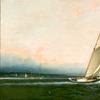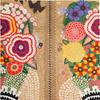Featured 19th Century Painter: William Leigh (American 1866 - 1955)
- March 10, 2021 10:14
William Leigh was born two years after the end of the Civil War at Maidstone Manor Farm (now known as the William R. Leigh house) in Berkeley County, West Virginia. It was said that he was a descendant of Pocahontas, famed Native American Indian heroine. Raised in Baltimore, Maryland, young Leigh showed potential skill as an artist and from 1880 to 1883 his family financed his art training at the Maryland Institute, Baltimore, where he studied under genre painter, Hugh Newell. He undertook academic training in Munich, Germany at the Raupp-Royal Academy (1883 to 1884), followed by additional lessons from Nikolaos Gyzis (1885 to 1886), Ludwig Von Löfftz (1887), and Wilhelm Lindenschmit (1891 to 1892). Returning to the United States in 1896, Leigh settled in New York City and found employment with Scribner's Magazine and Collier's Weekly Magazine as an illustrator. In 1897 Scribner's sent him on an assignment to North Dakota; however, it was another nine years until he returned to the American west. In 1906, Leigh, at the suggestion of his friend and former Munich Academy classmate, Albert Groll, visited Laguna, New Mexico. To finance the cost of the trip, he made an arrangement with the Santa Fe Railroad to give him free transportation in exchange for a painting of the Grand Canyon. The Railroad was so satisfied with Leigh’s painting, that they commissioned five more. He had found his calling—painting the southwest, its scenery and inhabitants, especially the Navajo, Hopi and Zuni Indians. The original Cosmopolitan Magazine (which at that time was a "first-class family magazine”), in 1907, commissioned Leigh to illustrate an article by H. G. Wells titled, The Things that Live on Mars. Wells was pleased with Leigh’s depictions, believing that they captured his own ideas of what Martian life looked like and not some “foolish hobgoblin or any artistic ideal that comes into our heads and call it a Martian.” World War I brought lean times, so Leigh turned to teaching and writing for additional income. He visited Wyoming in 1910 to make sketches for later paintings of the Yellowstone and Grand Canyon areas; however, he returned faithfully to New Mexico from 1912 to 1926 for his inspiration. In 1921, he and his second wife, Ethel Traphagen, a New York fashion designer, opened the Traphagen School of Fashion in New York, where 19th century artist William Leigh taught classes in figure drawing. He made two trips to Africa in 1926 and 1928 for the purpose of collecting material for the Akeley African hall in the American Museum of Natural History in New York. Afterwards he painted the backgrounds for the exhibit. His experiences in Africa were chronicled in his 1938 book, Frontiers of Enchantment: An Artist's Adventures in Africa. In 1933 he had published and illustrated his book, The Western Pony that showcased his skill in portraying horses. Leigh’s reputation as a magazine illustrator initially made it difficult for him to sell his western-scene paintings; however, that changed when he sought representation with the Snedecor and Babcock Gallery in New York City. Leigh was to become a pioneer of America genre-paintings, in the company of Frederic Remington and Charles M. Russell. Painter William Leigh was a member of the Allied Artists of America (founder); National Academy of Design, Elected Member; American Watercolor Society, Painters in Watercolor; Salmagundi Club, New York City. He exhibited widely and venues included: Royal Academy of Arts, England; World's Columbian Exposition (Chicago, 1892-1893); Louisiana Purchase Exposition (St. Louis, 1904); Panama Pacific Exhibition (San Francisco, 1915); American Watercolor Society, Painters in Watercolor; Salmagundi Club, New York City; National Academy of Design; Art Institute of Chicago; Whitney Museum of American Art; and the Corcoran Gallery and/or Art School, Washington DC. Leigh’s honors include the Scroll Award, New York City Federation of Women's Clubs (1950-1951); Kappa Pi National Art Fraternity (1951, Citation); Benjamin West Clinedinst Memorial Medal for outstanding achievement in fine arts (1953); Alumni Honor Medal of the Maryland Institute, (1954, most outstanding graduate); Conservation Award of the National Life Conservation Society (1954, distinguished wildlife artist), and elected Academician, National Academy of Design (1955).












_-Closing-the-Distance_100x100_c.jpg)








